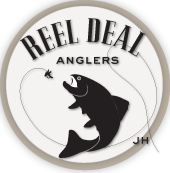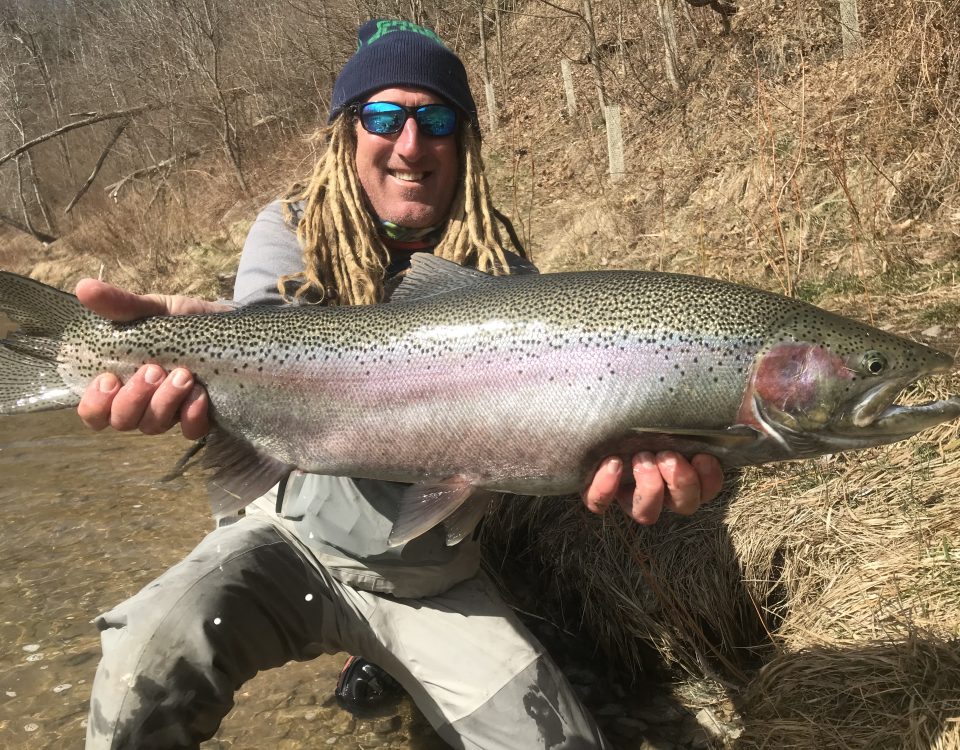How to properly handle trout part 2 – Jackson Hole Fly Fishing Guides

Jackson Hole and Pinedale Fly Fishing Guides
July 16, 2014
Picking the best options for our clients – Jackson Hole Fly Fishing Guides
August 2, 2014Our Jackson Hole Fly Fishing Guides want to try and educate everyone that handles trout so that they have a fighting chance to survive after being caught.
How to properly handle trout part 2. A great article written by Tony Bishop.
“Trout Dying To Get a Good Photo
We all should know the rules for releasing a trout with the best chance of survival, but there is one rule that is almost never included in articles about successful releasing.
So, you have landed the fish as quickly as possible to limit capture stress and you are about to pick up the fish and a get a few ‘grip and grin’ shots before release.
But, grip and grin, can all too often turn into grip and kill, and it is all down to where and how you grip the trout that can determine its survival.
Have look at the anatomical drawing above showing the main internal structure and components of a trout. Take particular notice where the heart is (red outline) – between and under the gills and liver, just above the Pectoral fins.
These three organs, heart, gills and liver are very susceptible to damage, although not always immediately obvious, unless the damage is very severe leading to immediate death. A fish subject to external pressure to the heart and other organs may swim away on release, but many die soon after.
Gripping a fish in the pectoral area using inward force and squeezing pressure will compress the heart and maybe the liver and gills. The outcome for the fish is not going to be good, even if it does manage to swim away on release.
So we should have a look at a gallery of grip and kill photos copied from the web and magazines – any ID of the person holding the fish has been removed. I should also note that some or even all of these fish were not released – I cold not tell.
This grip while probably not
lethal will still stress the heart.
Any squeezing here must be avoided.
We need to try and avoid any more stress than landing the fish has already incurred. Placing stress
on the heart and other organs will increase the chances of the fish dying exponentially.
A bad grip very likely to damage the fish’s heart and reduce survival chances.
The worst example of ‘grip and kill’ in these shots – almost certain lethal damage to heart, liver and gills.
The ‘UK Grip’ – A Killer Too!
So called UK grip that can kill trout
Those who follow UK trout fishing magazines and websites may have noticed the prevalence of photos with the trout being held as seen in the photo above. I did a quick flick through a pile of recent top selling UK magazines and websites and as rough estimate well over 70% of fish are held by what I call the ‘UK grip’. I believe trout are held this way to show off the fact that the fish is a ‘full-finned’ or a wild fish, not a stocked fish.
Most fly-fishing in the UK is done in stocked still-waters. Many (most?) stocked fish have their tails and fines damaged by other fish and the concrete walls of the stock pens. So to show off the fact the fish is ‘full-finned and tailed’ you need a grip that does just that. That grip, which I have called the ‘UK grip’, is great for showing fins and tails, but is it good for the trout? No!
The UK grip means that the tail of the fish is not firmly held, so the holder must squeeze the fish in the heart area as shown above. If the fish thrashes about, the grip around the heart area has to increase, because the grip ahead of the tail is very weak . All bad news for the heart and other organs.
But this bad grip is certainly not confined to the UK, you see grip and kill photos from around the world on the net, but it seems to be a more common practice in the UK.
This practice needs to stop. Magazines and websites need to stop showing photographs of fish held in damaging way.
The way it should be…
Good grip
The right way to hold a fish near the head. The trout is ‘cradled’ with the fingers parallel to the side of the fish, not clawing in like talons, or squeezing this vulnerable area.
The key to being able to get a good grip on the pectoral area is a good grip on the tail
One of New Zealand’s best known guides, Tony Entwhistle, writing in the New Zealand Fish & Game Magazine, (published here by permission) has one of the best descriptions I have read on the proper handling of a trout.
“Securely handling trout without causing stress or damage
Securely handling trout without causing stress or damage is a matter of a gentle touch, not a tight grip.
To pacify a landed trout, simply place a hand vertically in front of its nose to prevent it from swimming forward and fold the palm to cover both eyes. This acts as a mask and immediately calms it down. Trout relax quickly when their eyes are covered.
Next grasp the fish’s tail with the other hand, without excessive force.
Some anglers use a piece of stocking for grip, but with good technique this isn’t necessary. Securing a trout needs only gentle pressure between the thumb and forefinger, applied directly over the base of the tail, applied where it joins the body (hypural joint).
Apply pressure top and bottom through the first joints of the forefinger and thumb, rather than along the sides
The mistake is grasping the tail too far forward and using too much hand in doing so. Squeezing hard does not help as the fish slips more easily.
Now test the grip by lifting the fish slightly by the tail, keeping the other hand over the eyes for the moment. If the grip is secure the trout will not slip, but if it does resist grabbing at it with both hands. By quickly slipping a hand in front of the nose, and covering the eyes again, a lot more fish will be saved from premature release.
With a positive grip on the tail it is now possible to begin lifting the trout safely for a photograph or release.
Avoid squeezing the fish around the soft belly area behind the pectoral fins because this causes discomfort and can potentially cause serious damage to internal organs. Instead slide the free hand under the pectoral fins, orientating the hand so that the trout’s head rests along the index finger, with the pectoral fins spread out between thumb and little finger.
The trout will be nicely balanced and the soft tissue in the belly area will no be supporting any weight. Lifting the trout this way, and returning it to the water between photographs minimizes any distress which could reignite its struggles. Turn the fish belly up when removing the hook.
Handle trout gently and with respect and they won’t panic or stress, ensuring their revival for release without damage and a minimum of fuss.”
The Harsh Fact About Holding a Trout Out of The Water
There is no getting around it, lifting a trout out of the water to take a photo is almost certainly going to dramatically increase the stress and physical damage already done while landing the fish.
This is true, even when the fish is handled very carefully and all the “rules” about releasing are followed to the letter.
If you are really concerned about releasing a trout with the maximum chances of survival never lift it clear of the water.
To get the full picture on releasing trout, and other fish, fresh and salt water with the highest chances of healthy survival see this, it spawned the grip and kill article above.”
Article written by Tony Bishop









